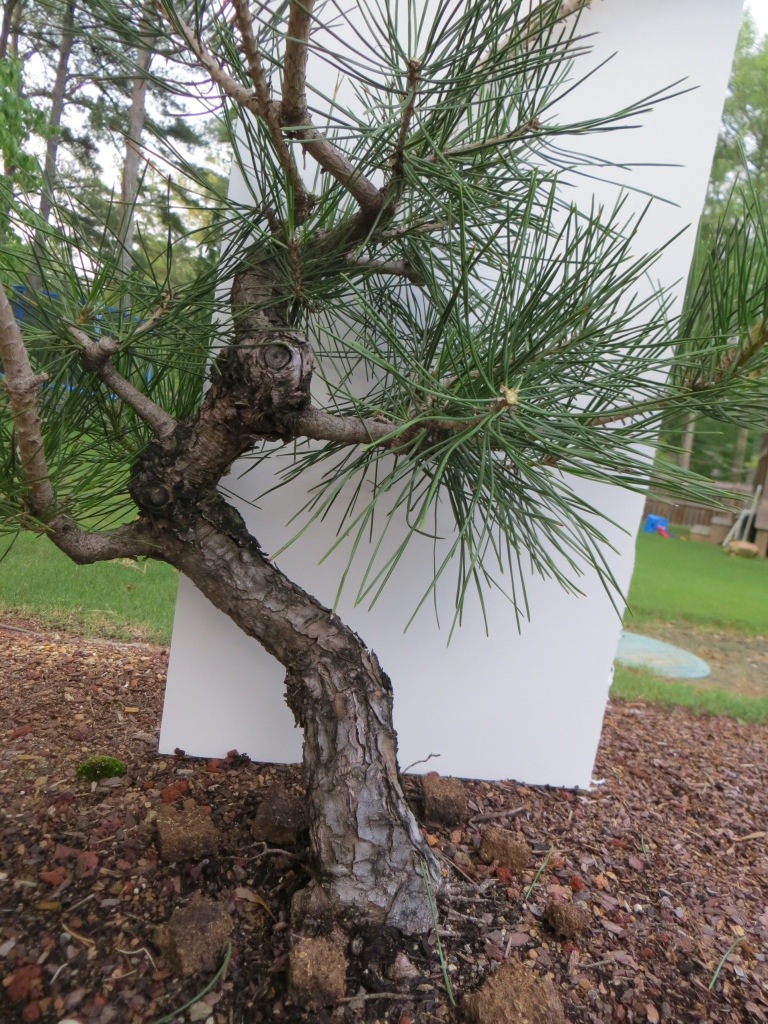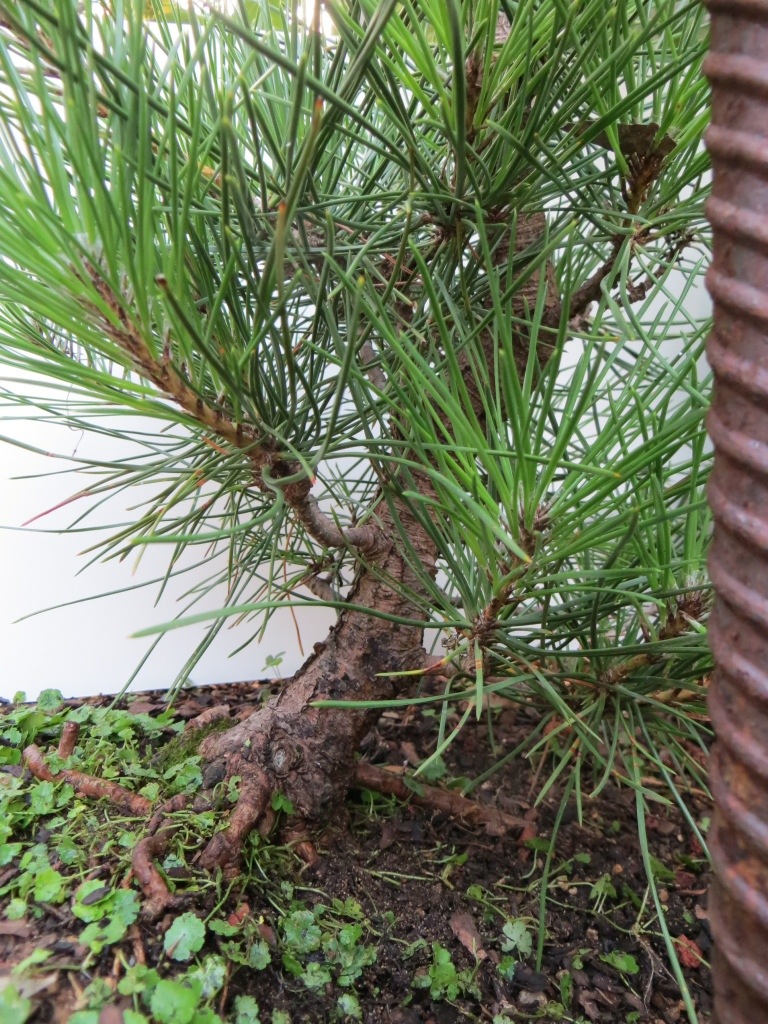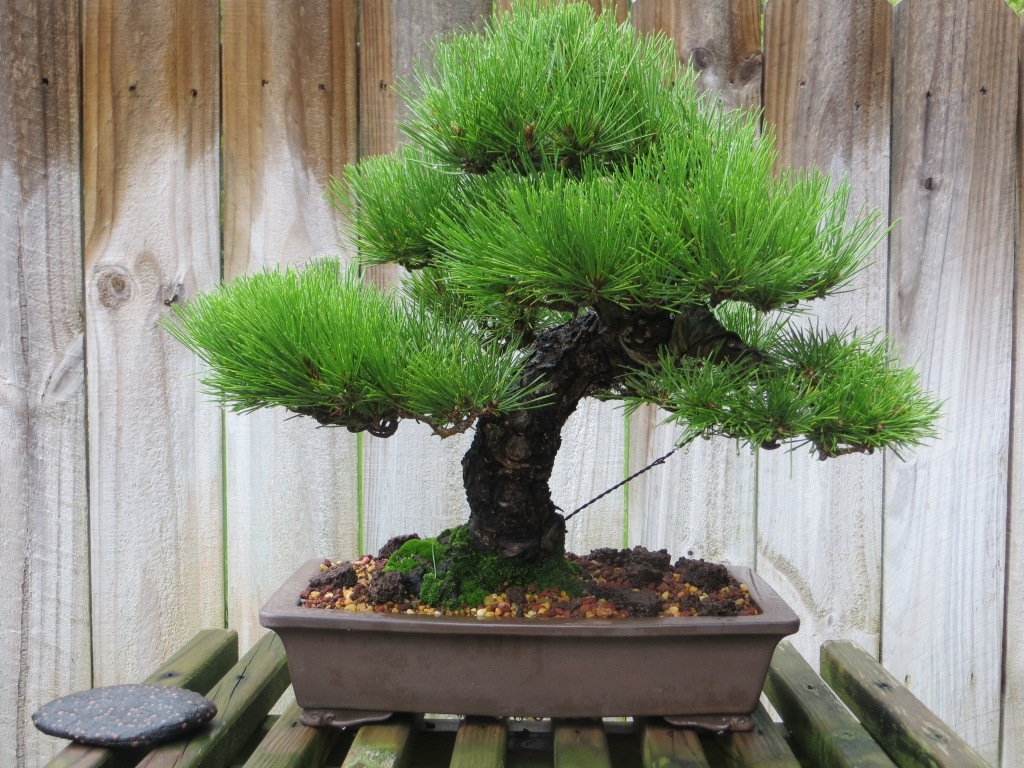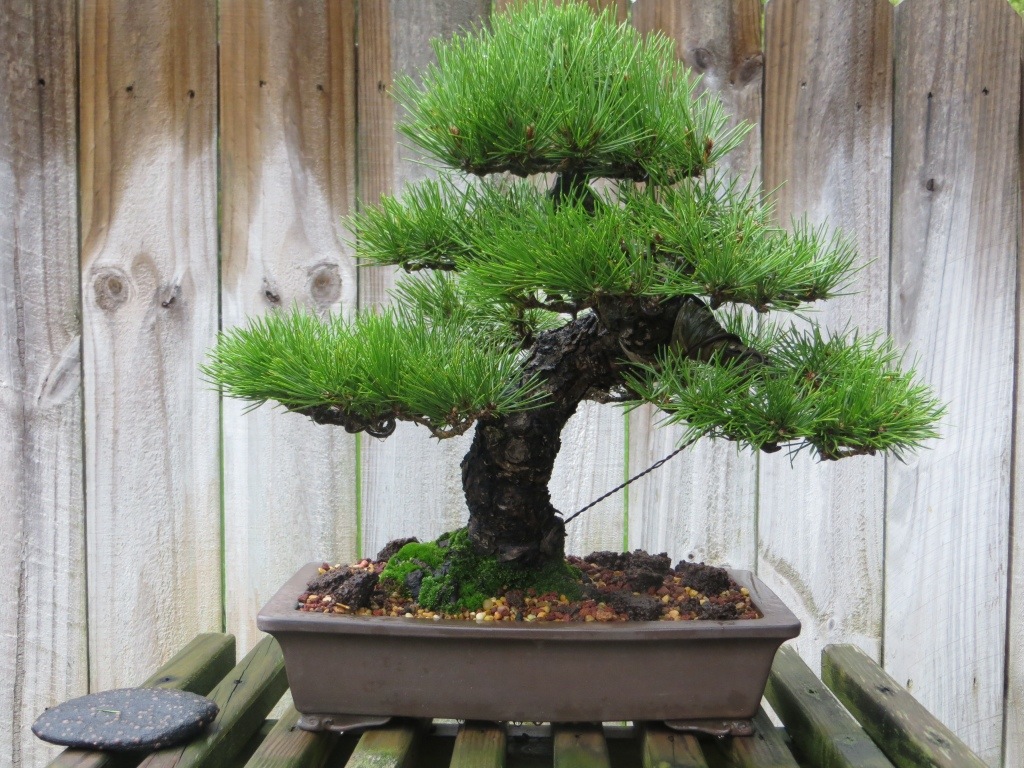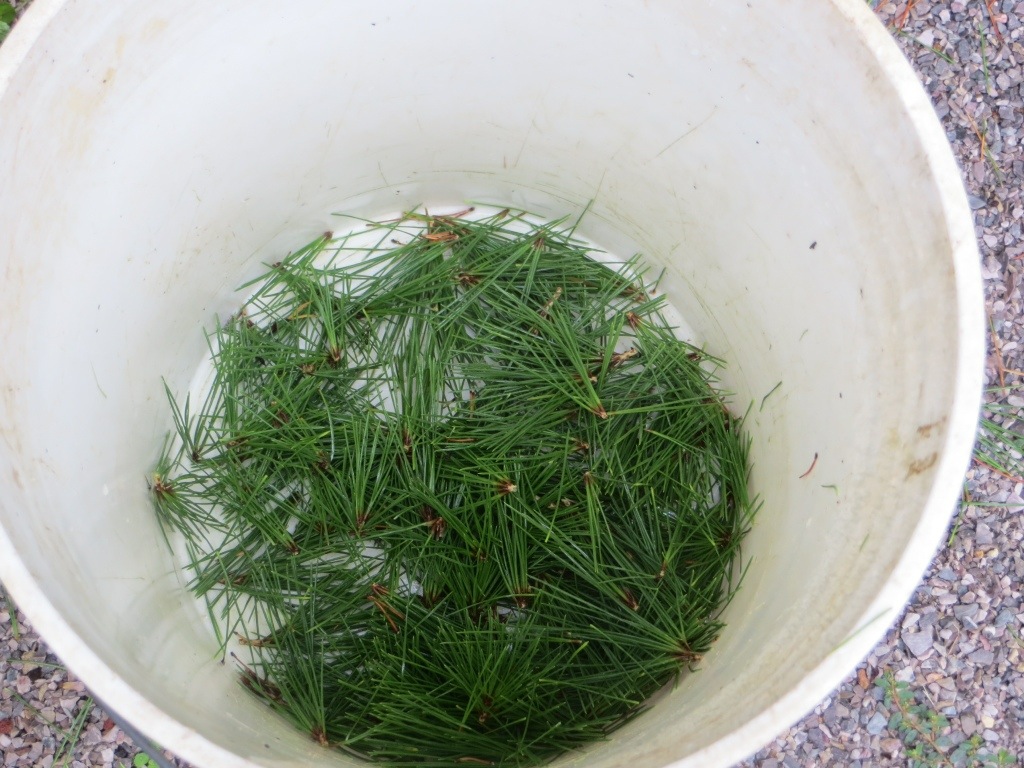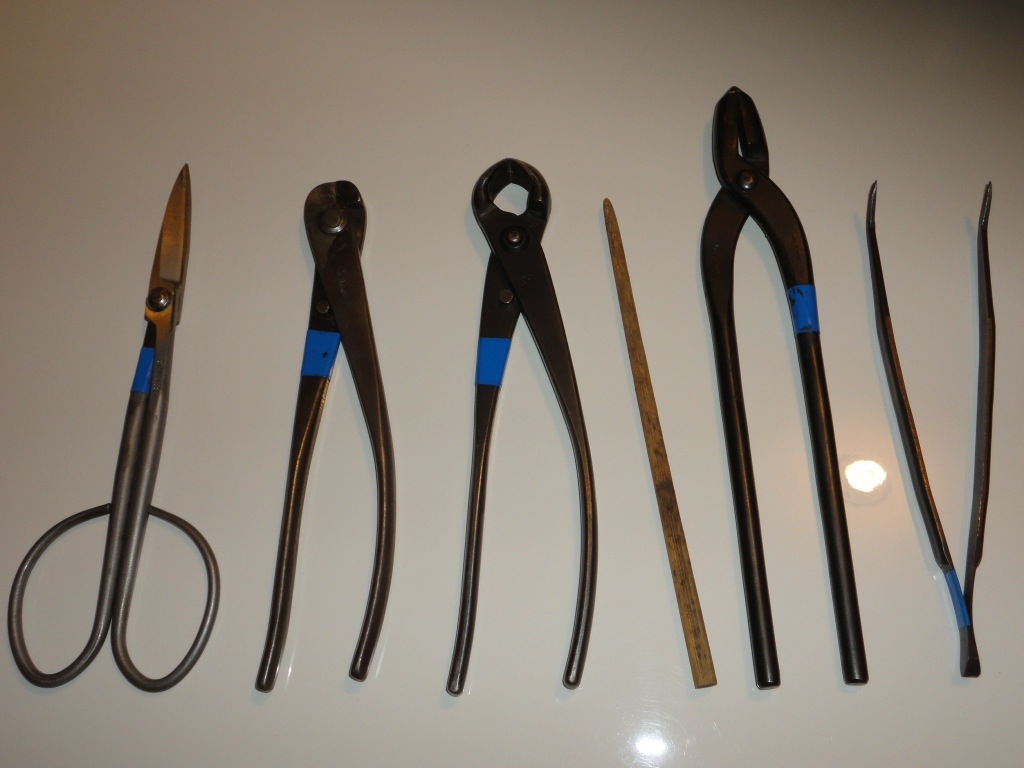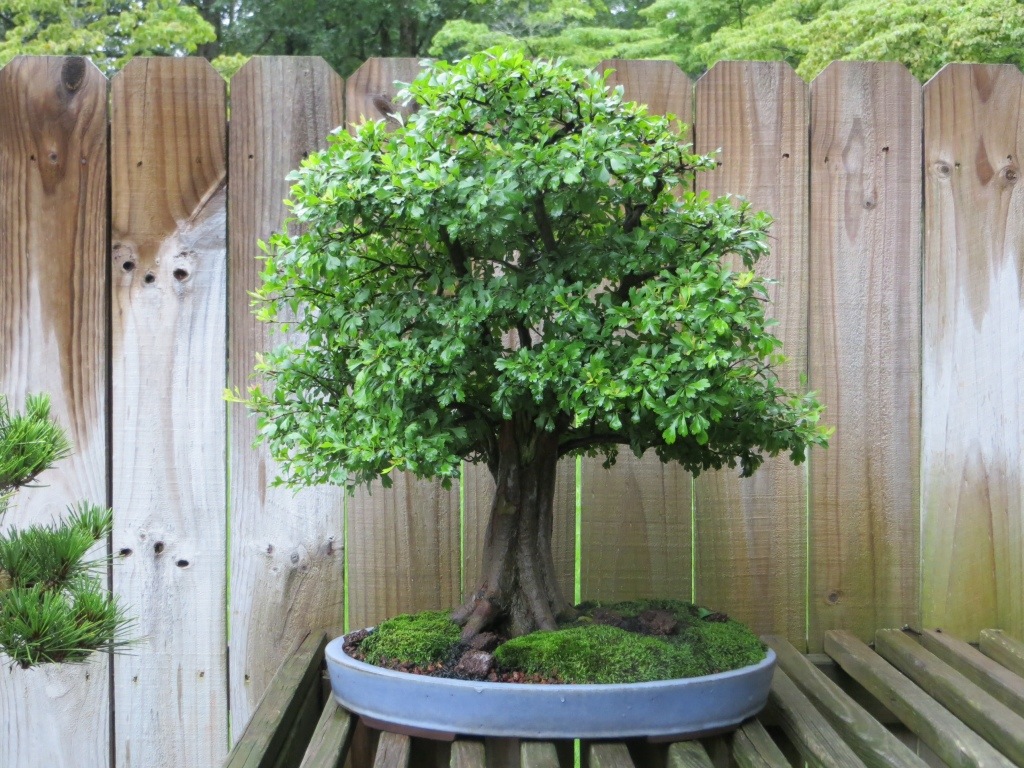Back in March we looked at using sacrifice branches to develop a JBP in the ground. Today, let’s revisit the same JBP and look at how to develop the “final” branches while it’s in the ground. Remember, sacrifice and final branches have very different roles, and are treated very differently.
For a refresher, click here for the article: https://nebaribonsai.wordpress.com/2013/03/02/sacrifice-branches-black-pine/
Sacrifice branches are allowed to grow long, so long as they don’t:
-Shade out the final branches
-Weaken final branches
-Create bulges or reverse taper
Final branches are developed concurrently and are developed mostly like any branches on a JBP in a pot. Even final branches can be thickened by the use of sacrifice branches.
Here is the JBP in the ground, 4 months later; easier to tell sacrifice from final branches, isn’t it?
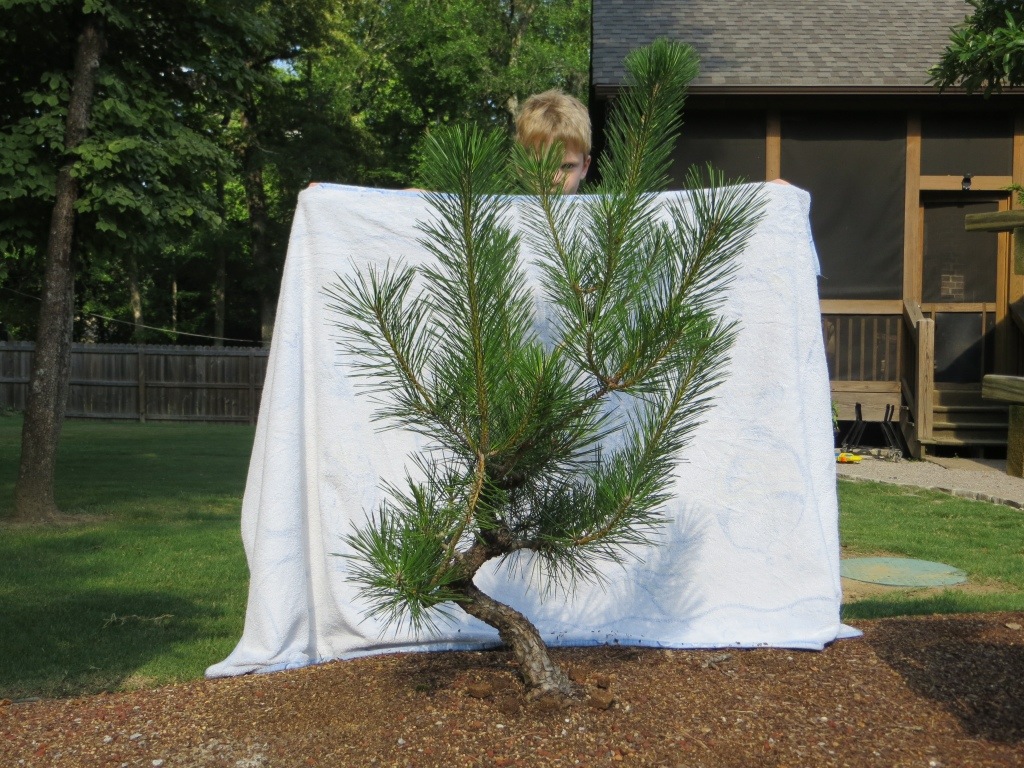
Since its candle-cutting time in my area, I use that technique to keep the final branches’ internodes shorter, while the sacrifice branches make the whole tree fatter.
Lowest-left branch is first. The upper shoot in the photo is the final branch. The lower shoot in the photo is a sacrifice branch used to thicken the final.
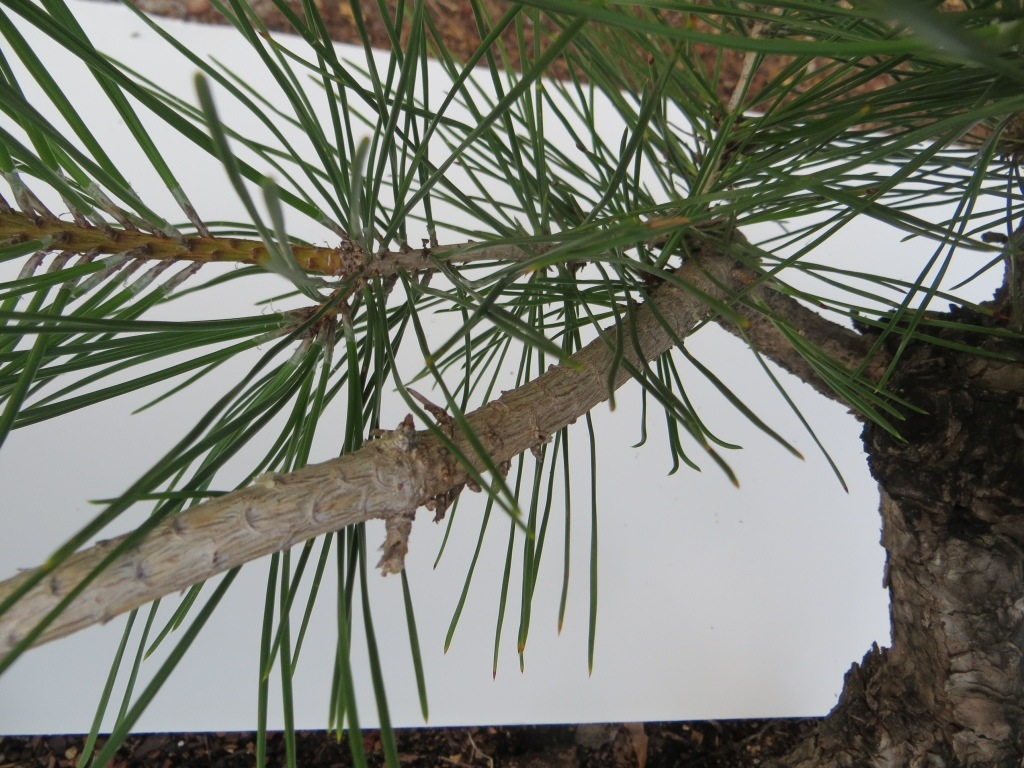
Panning in closer. This year’s candle is green/buff in color, last year’s growth is turning gray
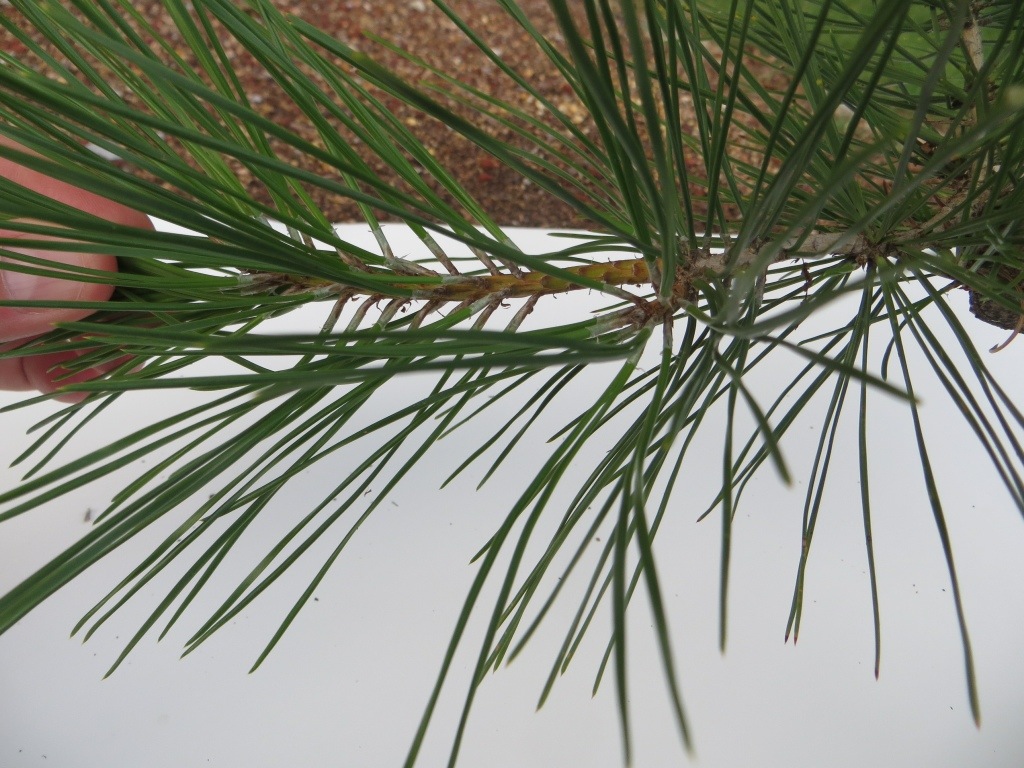
After removing this spring’s candle:
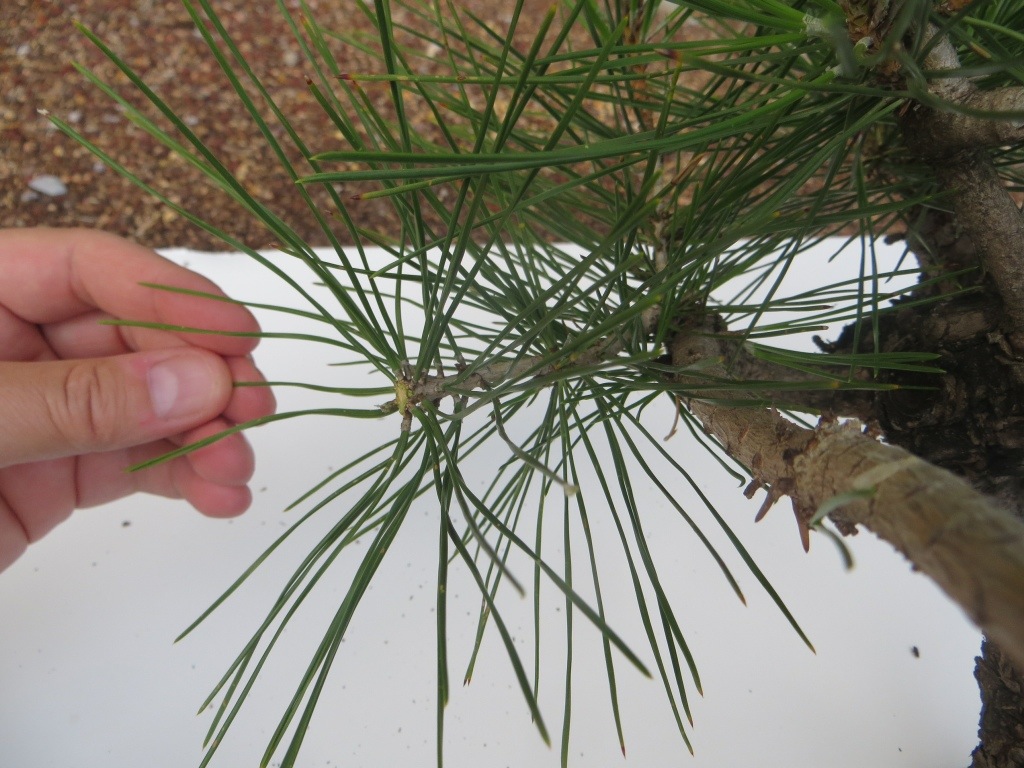
Moving to the first right branch:
After candle-pruning all remaining final branches:

Moving to a smaller JBP in the ground, with a very tall sacrifice branch used to thicken the entire trunk. I tied it to a length of rebar so it didn’t blow over…it’s very top-heavy right now, relative to the strength of the roots. Another year or so later, it shouldn’t be necessary.
Before:
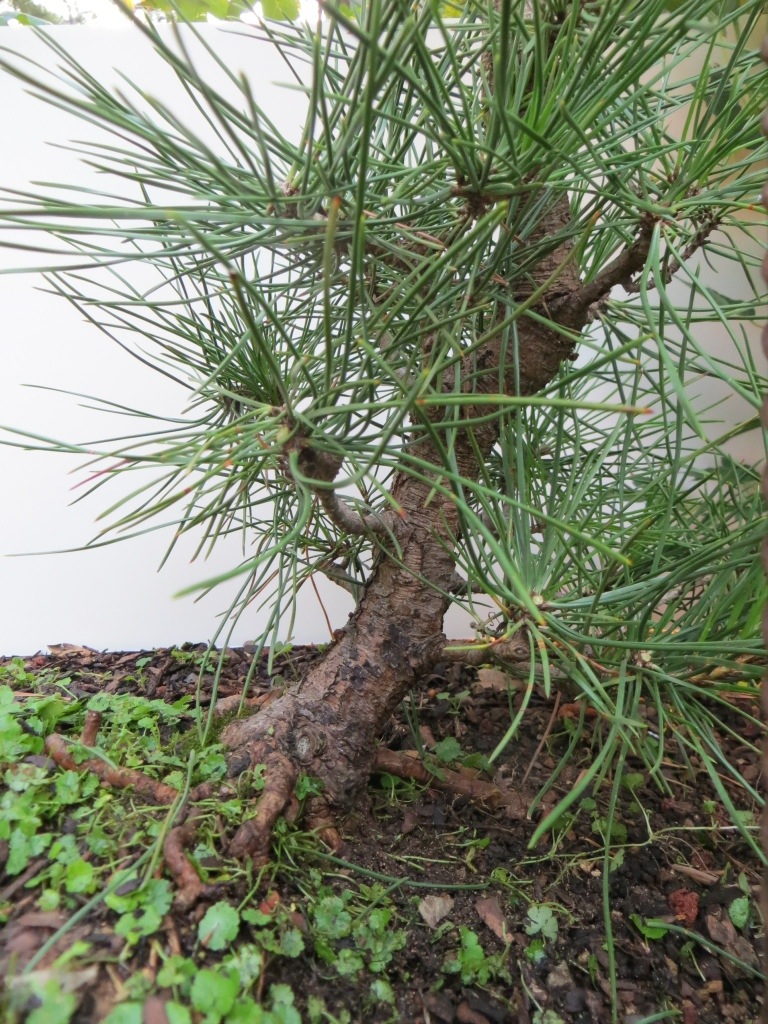
During this process, a few of this year’s candles were left on the branches which will be used as sacrifice branches to thicken the final branches, as seen on the lower right branch.
This fall, the sacrifice branches will be needle-plucked to ensure they don’t shade out final branches.

